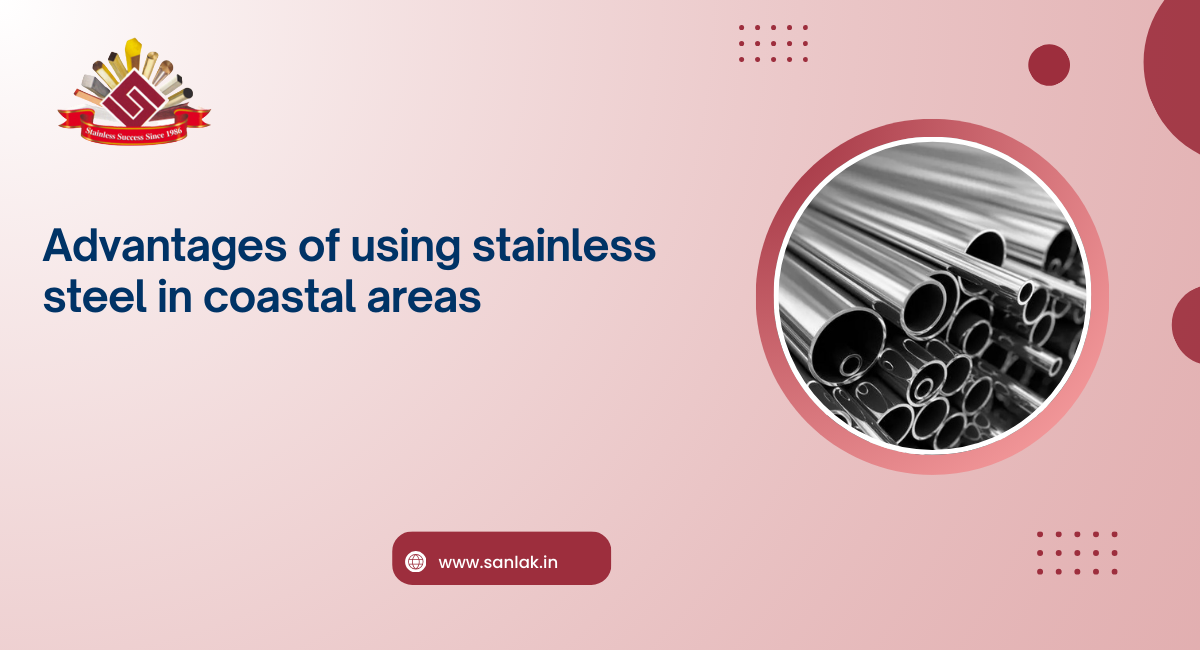
Advantages of using stainless steel in Coastal Areas
Life by the sea has its pros, like cool sea winds, grand sunsets, & a calm life. But it has a hidden con, which is salt. Salty air and high humidity can harm homes, cars, and outdoor objects. They wear down quickly, and repairs are expensive.
Stainless steel comes into its own at this point. Stainless steel, known for its remarkable rust resistance and long-lasting strength, is the preferred material for anyone building or remodeling in coastal locations. In this blog, we'll look at why stainless steel succeeds where other materials fail, and how it can save you time, money, and maintenance headaches in the long term.
Why do coastal areas need special building materials?
Coastal locations subject buildings to continual moisture, wind-driven salt spray, and bright sunlight, all of which accelerate metal corrosion and material degradation.
Traditional materials, such as mild steel, untreated wood, and low-grade metals, can soon rust, degrade, or lose their appearance when exposed to these extreme conditions. This is why marine-grade stainless steel and other corrosion-resistant materials are the ideal materials for beach houses and coastal structures.
The main problems for coastal buildings are:
- Saltwater corrosion happens when salt gets into surfaces and causes damage.
- Moisture retention causes rust and damage.
- UV rays weaken and degrade some materials.
Homeowners can use 316 stainless steel, which is made for marine conditions, so it is great to use metals for beach houses. This metal ensures the construction is strong, safe, and keeps the beach house looking good even in the harshest seaside weather.
Along with its durability and corrosion resistance, understanding current stainless-steel prices in India can help you make cost-effective decisions for coastal construction projects.
How does Stainless Steel resist saltwater corrosion?
In coast spots, 316 steel is the top pick. It is not like the plain types. It has molybdenum. This adds a strong shield from holes & cracks. These are big issues near the sea.
Some of the primary benefits of stainless steel in coastal areas:
- Stainless steel can resist rust really well, even with salt spray and when it’s humid out.
- It requires minimal maintenance, needing little cleaning to remain rust-free.
- Its long lifespan also reduces the need for frequent replacements.
Stainless steel is the preferred material for everything from beach house fixtures and outside railings to stainless steel screws and structural elements in marine situations because of its inherent capacity for self-defence. If you're seeking for dependable stainless steel for coastal applications, Sanlak's got you covered.
Why do coastal areas need special building materials?
Living or constructing close to the sea involves enduring continuous exposure to damp, salty air and moisture. For this reason, coastal regions require marine-grade stainless steel. Ordinary metals cannot endure the harshness of stainless steel in marine environments, where salt particles accelerate rust and degrade structures.
316 stainless steel is particularly popular for coastal applications due to its high stainless steel corrosion resistance. Durability and resistance to saltwater damage are the main factors when selecting the best stainless steel for marine applications. Using stainless steel for coastal areas assures long-term performance in residences, resorts, and harbours.
Whether it's railings, gates, or hardware, stainless steel in coastal settings provides the strength required to withstand harsh seaside conditions. Lots of house plan minds say to use strong metal for beach homes & top steel for sea homes. This keeps up keep costs low. Even small bits, such as steel screws, can fight rust. They keep the build strong in salt, wet air.
Real-World Applications in Coastal Areas:
Buildings and Facades - Because of its high corrosion resistance, stainless steel is used for balconies, railings, and cladding in modern beachfront resorts and residences.
Marine equipment- boats, docks, and ladders- relies on stainless steel fittings and screws for safety and long-term performance.
Outdoor Furniture - Sculptures, railings, and benches made with high-quality stainless steel near the coast tend to not rust.
Infrastructure - Bridges, signboards, and light poles are made out of stainless steel to withstand harsh marine climates
Conclusion:
When building near coastlines, robust materials alone won't suffice. Such areas are notorious for their harsh weather, and any construction will necessitate specific and effective problem-solving measures.
Marine-grade stainless steel is the strongest and most corrosion-resistant steel alloy stainless steel which will make the structure beautiful and resistant to corrosion, polishing the surface and remaining tough to handle for years.
Spending money on proper research and development will ease the mind of the investors as it will minimize the upkeep further down the line of the building. No matter how harsh the environment, the building will be able to stand untouched for years.
